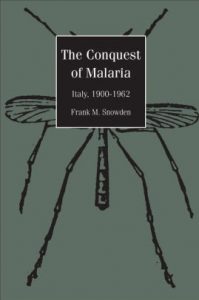Mời các bạn làm bài tập ôn luyện dạng bài Summary Completion trong IELTS Reading. Bài tập này giúp các bạn ôn lại kỹ năng xử lý dạng bài Summary Completion cũng như củng cố lượng từ vựng. Bài có tất cả 5 câu lựa chọn đáp án đúng để hoàn thành đoạn tóm tắt. Sau khi làm xong bài, các bạn hãy ấn submit để xem kết quả bài làm của mình và giải thích của từng câu hỏi. Bạn hãy thử làm để củng cố và nâng cao kiến thức để chuẩn bị cho bài thi IELTS Reading nhé!
Chúc bạn có thời gian hữu ích trên website!
The Conquest of Malaria in Italy, 1900-1962

Malaria.Bad air. Even the word is Italian, and this horrible disease marked the life ofthose in the peninsula for thousands of years. Yet by 1962, Italy was officially declared malaria-free, and it has remained so ever since. FrankSnowden\’s study of this success story takes us to areas historians have rarelyvisited before.
A Everybody now knows that malaria is carried by mosquitoes. But in the 19thcentury, most experts believed that the disease was produced by\”miasma\” or \”poisoning of the air\”. Others made a linkbetween swamps, water and malaria, but did not make the further leap towardsinsects. The consequences of these theories were that little was done to combatthe disease before the end of the century. Things became so bad that 11m Italians(from a total population of 25m) were \”permanently at risk\”. Inmalarial zones the life expectancy of land workers was a terrifying 22.5 years.Those who escaped death were weakened or suffered from splenomegaly — a\”painful enlargement of the spleen\” and \”a lifeless stare\”.The economic impact of the disease was immense. Epidemics were blamed onsouthern Italians, given the widespread belief that malaria was hereditary. Inthe 1880s, such theories began to collapse as the dreaded mosquito was identifiedas the real culprit.
B Italian scientists, drawing on the pioneering work of French doctor AlphonseLaveran, were able to predict the cycles of fever but it was in Rome that further key discoveries were made. Giovanni Battista Grassi, a naturalist,found that a particular type of mosquito was the carrier of malaria. By experimenting on healthy volunteers (mosquitoes were released into rooms wherethey drank the blood of the human guinea pigs), Grassi was able to make the direct link between the insects (all females of a certain kind) and thedisease. Soon, doctors and scientists made another startling discovery: the mosquitoes themselves were also infected and not mere carriers. Every year,during the mosquito season, malarial blood was moved around the population by the insects. Definitive proof of these new theories was obtained after anextraordinary series of experiments in Italy, where healthy people wereintroduced into malarial zones but kept free of mosquito bites — and remainedwell. The new Italian state had the necessary information to tackle thedisease.
C A complicated approach was adopted, which made use of quinine – a drug obtainedfrom tree bark which had long been used to combat fever, but was now seen as acrucial part of the war on malaria. Italy introduced a quinine law and aquinine tax in 1904, and the drug was adminis tered to large numbers of rural workers. Despite its often terrible side-effects (the headaches produced wereknown as the \”quinine-buzz\”) the drug was successful in limiting thespread of the disease, and in breaking cycles of infection. In addition, Italyset up rural health centres andinvestedheavily in education programmes. Malariaas Snowden shows, was not just a medical problem, but a socia and regional issue,and could only be defeated through multi-layered strategies. Politics was itself transformed by the anti-malarial campaigns. It was originally decided togive quinine to all those in certain regions even healthy people; peasants were often suspicious of medicine being forced upon them. Doctors weie sometimes metwith hospitality andrefusal, and many were dubbed \”poisoners .
D Despite these problems, the strategy was hugely successful. Deaths from malaria fell bysome 80% in the first decade of the 20th century and some areas escaped altogether from the scourge of the disease. War. from 1915-18, delayed thecampaign. Funds were diverted to the battlefields and the fight against malaria became a military issue, laying the way for the fascist approach to theproblem. Mussolini\’s policies in the 20s and 30s are subjected to a serious cross-examination by Snowden. He shows how much of the regime’s claims to have\”eradicated\” malaria through massive land reclamation, forced population removals and authoritarian clean-ups were pure propaganda. Massdraining was instituted often at a great cost as Mussolini waged war not on the disease itself, but on the mosquitoes that carried it. The cleansing of Italywas also ethnic, as \”carefully selected\” Italians were chosen toinhabit the gleaming new towns of the former marshlands around Rome. The\”successes under fascism were extremely vulnerable, based as they were ona top-down concept of eradication. As war swept through the drained lands inthe 40s, the disease returned with a vengeance.
E In the most shocking part of the book, Snowden describes — passionately, but withthe skill of a great historian — how the retreating Nazi armies in Italy in1943-44 deliberately caused a massive malaria epidemic in Lazio. It was\”the only known example of biological warfare in 20th-centuryEurope\”. Shamefully, the Italian malaria expert Alberto Missiroli had arole to play in the disaster: he did not distribute quinine, despite being wellaware of the epidemic to come. Snowden claims that Missiroli was alreadypreparing a new strategy — with the support of the US Rockefeller Foundation —using a new pesticide, DDT. Missiroli allowed the epidemic to spread, in orderto create the ideal conditions for a massive, and lucrative, human experiment.Fifty-five thousand cases of malaria were recorded in the province of Littoriaalone in 1944. It is estimated that more than a third of those in the affectedarea contracted the disease. Thousands, nobody knows how many, died. With thewar over, the US government and the Rockefeller Foundation were free toexperiment. DDT was sprayed from the air and 3m Italians had their bodiescovered with the chemical. The effects were dramatic, and nobody really caredabout the toxic effects of the chemical.
F By 1962, malaria was more or less gone from the whole peninsula. The last caseswere noted in a poor region of Sicily. One of the final victims to die of the disease in Italy was the popular cyclist, Fausto Coppi. He had contractedmalaria in Africa in 1960, and the failure of doctors in the north of Italy tospot the disease was a sign of the times. A few decades earlier, they wouldhave immediately noticed the tell-tale signs; it was later claimed that a smalldose of quinine would have saved his life. As there are still more than 1mdeaths every year from malaria worldwide, Snowden\’s book also has contemporary relevance. This is a disease that affects every level of the societies where itis rampant. It also provides us with \”a message of hope for a worldstruggling with the great present-day medical emergency\”.
Questions 1-5
Complete the summary below using NO MORE THAN TWO WORDS from the passage.
Before the link between malaria and 1____was established, there were many populartheories circulating among the public, one of which points to 2____, the uncleanair. The lack of proper treatment affected the country so badly that rural peoplein malaria infested places had extremely short 3____. The disease spread soquickly, especially in the south of Italy, thus giving rise to the idea thatthe disease was 4____. People believed in these theories until mosquito wasfound to be the 5____in the 1880s.
 IELTS Max Luyện thi IELTS cam kết đầu ra
IELTS Max Luyện thi IELTS cam kết đầu ra




